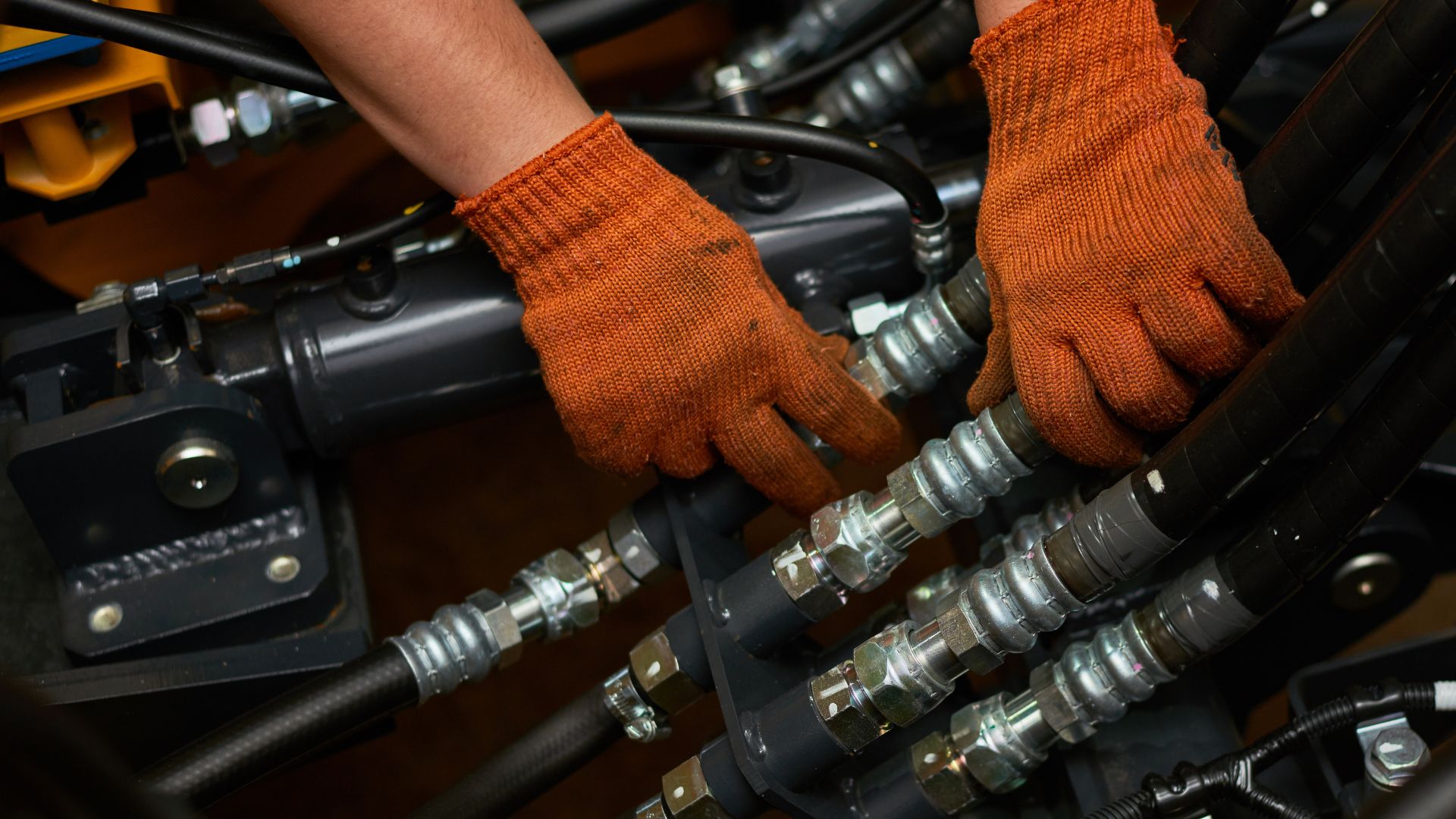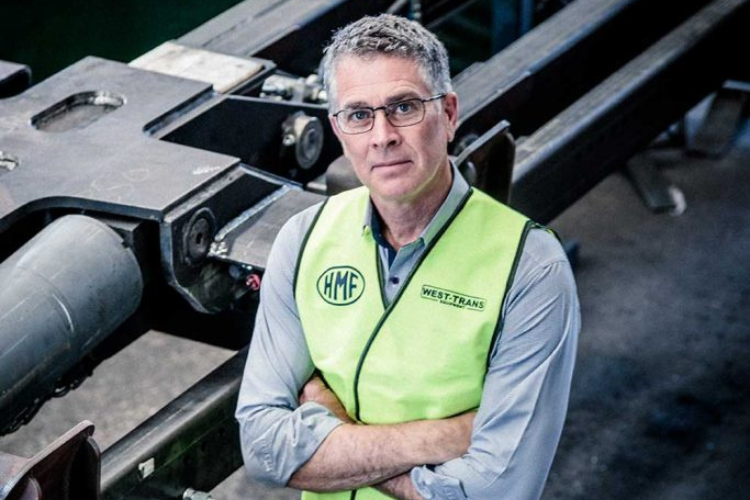From skip loaders to hook lifts and vehicle-loading cranes, the machines you rely on day-to-day need to be tough and ready to handle any conditions the Australian climate may throw at them. These workhorses power through harsh sites, remote jobs, and blazing heat, but the dusty outback and coastal extremes can still take their toll.
Preparation is essential to keeping your vehicles safe on the road. In this guide, we’ll show you how to prepare your fleet operations for efficiency in our harsh conditions through practical maintenance, smart equipment choices, and servicing strategies that combat the elements.
The Challenges of the Australian Environment

The Australian environment is anything but gentle on heavy vehicles. From coast to desert, the conditions can be relentless, and your fleet is exposed to it all.
High ambient temperatures and intense UV exposure are the most common challenges across much of the country. Heat puts constant stress on cooling systems, engine components, and fluids, leading to overheating. Moreover, UV rays degrade rubber seals, hoses, tarps, and paintwork over time.
Dust is another major concern, especially in the outback and particularly in mining, construction, and rural transport. Anyone who has driven through the Red Centre knows how fine red dust finds its way into just about everything. It can clog filters, contaminate hydraulics, and cause premature wear in electrical systems and sensors.
Add to that the punishment of corrugated roads and rough work sites, and you’ve got a perfect storm for mechanical wear. The continuous vibration and jarring movements all wear down your truck’s components, especially the suspension systems. Over time, these conditions lead to leaking hydraulics, frayed wiring, worn pins and bushings, and even tyre blowouts. Dealing with these issues in fleets that aren’t properly prepared can mean that costs quickly add up.
Preventative Maintenance for Hook Lifts & Skip Loaders
So, what can you do to help your gear handle the heat, dust, and rough terrain? Like most machinery, it comes down to solid preventative vehicle maintenance, especially for high-wear equipment like hook lifts and skip loaders.
The first step in monitoring vehicle health is to check the hydraulic systems, as they are the lifeblood of this machinery. Regularly check for leaks, contamination, dust build-up and monitor filters and changes to fluid levels.

You must also ensure all the moving parts are well-greased. This means the lifting arms, locking mechanisms, and the rollers that take a beating on every job. Every time a heavy skip is pulled or pushed, especially on uneven ground or with misaligned loads, the pivot points absorb a significant amount of force and friction. As a result, these “wear points” become weak links without proper fatigue management.
Finally, implement dust-proofing measures wherever possible, especially if you work in dusty environments such as mining and large construction sites. Make filter inspection and replacement a part of your regular schedule. Clean components and proper airflow are key to keeping your machinery running reliably and improving fleet efficiency.
Choosing Equipment Built for Harsh Conditions
The best preventative maintenance starts with choosing equipment that’s built to handle Australia’s extremes from day one. When your hook lifts, skip loaders or vehicle-loading cranes are purpose-built for tough conditions, you’re already one step ahead.
Things to look for are reinforced frames made from high-tensile steel, which not only provide your equipment with the strength to handle heavy loads, but also have the flex to absorb shock from rough terrain.
If you’re working in hot, humid or dusty conditions, invest in sealed electrical systems and weather-resistant hydraulics designed to resist heat and moisture. However, none of this matters if you overlook load capacity and stability. Safety regulations should come first, especially when working on uneven sites in the construction industry.
Operator Training & Onsite Checks
If you want to take your fleet safety, preparation, and team to another level, create a culture of safety and compliance that starts from the ground up. Ensure all operators know how to use the equipment correctly and can spot issues before they become costly problems. Create daily routines that become ingrained in your team’s process.
This includes walk arounds, proper lifting and unloading techniques, and educating on the early signs of wear or stress. You can implement this through your fleet management software.
Planning for Remote or Regional Work

Where we see most fleets fail is out in remote or regional areas, where breakdowns can cost far more than just time. If you’re not prepared, breakdowns on isolated work sites can be costly and inconvenient. So, it’s crucial to think ahead.
That means implementing proper fleet risk management, including carrying the right spare parts, careful fuel management and having access to mobile emergency repair options. Finally, if you want to take prep to the next level, use telematics or GPS tracking to monitor vehicle performance, transportation costs and scheduling maintenance proactively.
Why Invest in Quality Equipment for Harsh Conditions
If your fleet operates in these remote, harsh, or high-risk environments, investing in high-quality machinery built for them is a wise move for preventive maintenance.
You’ll have fewer breakdowns, corrective maintenance and significant cost savings, which means stronger returns over the life of the equipment. Most importantly, having reliable, fit-for-purpose gear supports driver safety and helps ensure compliance with industry regulations where the margin for error is slim.
Why Warranty Still Matters in Harsh Environments
This may seem obvious, but when choosing new skip bin loaders and equipment, a solid warranty is everything in your fleet maintenance strategy. It doesn’t just give you peace of mind against early failures; it shows the manufacturer’s confidence in the equipment. Better yet, reputable brands often back their warranties with reliable service and parts support, which makes all the difference when operating remotely or in the mining and construction sectors.
What’s Usually Covered – and What’s Not
While they vary, warranties typically cover manufacturing faults, defects in structural components, and sometimes hydraulics or electronics.
However, they often exclude damage caused by misuse, overloading, or lack of maintenance, which is why a culture of safety compliance is so beneficial. This is especially important if operating in harsh conditions, because some manufacturers can void coverage if equipment isn’t properly maintained or used outside recommended parameters.
Maintenance Obligations to Keep Your Warranty Valid
To keep your warranty intact, follow the servicing schedule, document inspections, and use OEM-approved parts. Logging maintenance activities in your fleet management software accurately is key. Without it, your claim may be rejected.
Choosing the Right Supplier for Long-Term Support

The best equipment is only as good as the support behind it. Look for a supplier that offers local parts availability to reduce downtime, a responsive warranty claims process, and extended service plans for added peace of mind. Additionally, ensure regular servicing is maintained with the original equipment manufacturer (OEM) to keep your equipment running at peak performance and preserve warranty coverage. As the original supplier, West-Trans backs its products with real support when it counts.
Warranty + Preparation = Australian-Ready
But remember, don’t rely on the warranty alone. With the right preparation, servicing, and training, your fleet can achieve fewer breakdowns and better ROI.
Choose a supplier who stands by their gear with warranty support built for tough Aussie conditions. Get in touch with West-Trans.


